Researchers: Feed changes to increase sustainability have changed its nutritional profile, but farmed salmon still has few peers in omega-3s
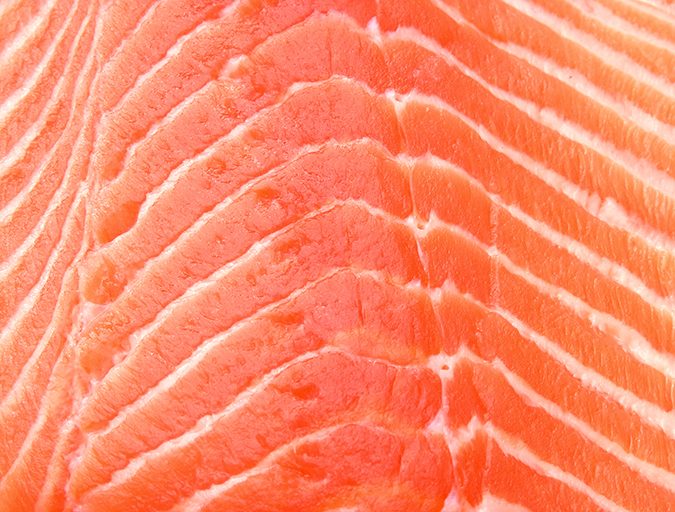
You are what you eat. Farmed salmon are too.
As the salmon aquaculture industry expanded to four continents in recent decades, a reality about the product’s primary input – feed, largely derived from wild fisheries in the industry’s earlier days – became abundantly clear to producers: Feed required supplementation, via terrestrial agriculture, to reduce dependency on finite marine resources, namely fishmeal and fish oil.
This work – embraced by the entire seafood value chain from feed formulators to retail buyers – is thus far a rousing success. Commonly accepted “feed conversion ratios” – the amount of animal feed required to produce an equivalent body mass – for farmed fish check in well below those of terrestrial animals like broiler chickens, hogs and cattle.
But with the inclusion of more terrestrial plant ingredients (soy, rapeseed oil and other ingredients that do not contain similarly high levels of healthful fatty acids) came another reality: The nutritional profile of the farmed fish would inevitably change as well. Research from the University of Stirling, originally published in February, confirmed this, and even put a number on the decline: Farmed salmon from Scotland, on average, have about half the levels of the much-touted omega-3s that they once did.
“This is not controversial but rather a fact,” said Ronald W. Hardy, director of the Aquaculture Research Institute at the University of Idaho. “Levels are a little more than half of levels a decade ago but they are still quite high, such that the recommended intake can be supplied by consuming a relatively small amount of salmon each week.”
Drs. Matthew Sprague and Douglas Tocher, the University of Stirling (Scotland) researchers whose work was recently given fresh legs in a BBC News report – Omega-3 oils in farmed salmon ‘halve in five years’ – told the Advocate that despite the changes, farmed salmon remain one of consumers’ best sources of omega-3s, which are crucial long-chain polyunsaturated fatty acids (LC-PUFA) originating from algae that animals cannot synthesize and must get from diet.
This fact, they said, was unfortunately lost in ensuring mass media reports about their study, which was published in an open-access journal from the publishers of Nature [Sprague, M. et al. Impact of sustainable feeds on omega-3 long-chain fatty acid levels in farmed Atlantic salmon, 2006-2015. Sci. Rep. 6, 21892; doi: 10.1038/srep21892 (2016).]
“So, as the aquaculture industry continues to grow the finite amount of fish oil is being spread thinner and thinner and combined with vegetable oils in the feeds of fish, resulting in a decrease in the levels of omega-3s in farmed salmon,” said Sprague.
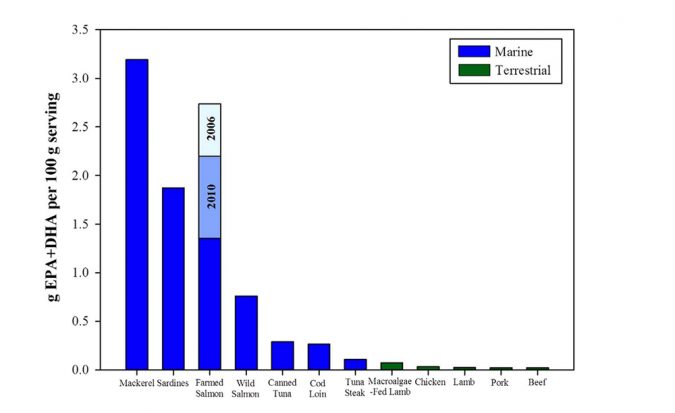
Despite this decline in LC-PUFAs – EPA (eicosapentaenoic acid) and DHA (docosahexaenoic acid) – farmed salmon still delivers the second-highest EPA-plus-DHA total of any fish species, right behind mackerel. Sprague and Tocher’s work still discovered an average of 1.5 grams of EPA+DHA per 100 grams of flesh, when in 2006 the standard recommended portion of 130 grams contained 3.5 grams of EPA+DHA.
“Compared to the wild Pacific salmon species that we find here on UK supermarket shelves, farmed salmon can contain two to five times more EPA+DHA!” said Sprague. “The EPA+DHA of salmon farmed in the UK is largely dictated by the retailers themselves, and so it is a very bespoke product. So there are some salmon producers who use higher levels of fish oil in the diets.”
One such producer, Loch Duart Ltd., which farms in northwest Scotland, exclaimed shortly after the BBC News report was published that the omega-3 levels in its fish remain high, at 2.7 g EPA+DHA per 130-gram portion, or 90 percent of the weekly recommended requirement of 3 grams EPA+DHA. Loch Duart commissions the Nutrition Analytical Service at the University of Stirling’s Institute of Aquaculture – where Sprague and Tocher work – to carry out fatty acid analysis on its salmon.
Of course we knew the consequences. That is why the EU alone spent millions of euros in FP5-7 funding research into fishmeal and fish oil replacement. We knew exactly what the impact would be.
“Our feed policy, low-density rearing, fallowing and other environmentally friendly practices make Loch Duart salmon a little more expensive and we think it is worth it,” the company stated in its response.
Sprague said that Scotland’s salmon production, much smaller in comparison to world leaders Norway and Chile, makes this possible. The researchers also commended the aquaculture industry for helping to investigate alternative future sources of omega-3s.
“The likely contenders [are] microalgae and transgenic plant sources,” Sprague said. “These have been investigated for some time now, but take time to come to fruition to supply the levels that aquaculture requires.”
Regarding the media coverage of their study, Sprague and Tocher made one thing clear: The repercussions of feeding fish a diet containing larger amounts of vegetables – lower omega-3 levels – were certainly not a surprise, or some unintended consequence.
“Of course we knew the consequences. That is why the EU alone spent millions of euros in FP5-7 funding research into fishmeal and fish oil replacement. We knew exactly what the impact would be,” said Tocher. “There were no better options and we did a huge amount of research into determining what we could do without impacting fish health and welfare – something that was paramount – while still maintaining a healthy level of omega-3. This is why I object to this story being portrayed in a negative light. There are masses of positives!”
Editor’s Note: Lisa Duchene contributed to this report.
Author
-

James Wright
Editorial Manager
Global Aquaculture Alliance
Portsmouth, NH, USA
[103,114,111,46,101,99,110,97,105,108,108,97,97,103,64,116,104,103,105,114,119,46,115,101,109,97,106]
Related Posts
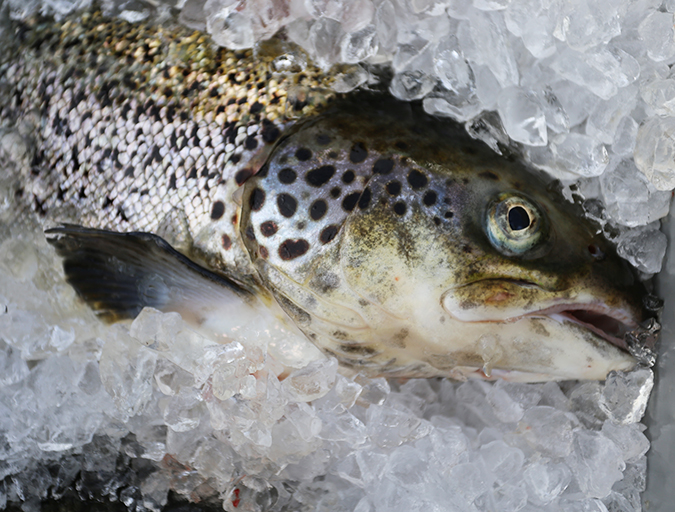
Aquafeeds
Fishmeal-free Atlantic salmon feed formulation shows promise
A recent study evaluated the effects of a fishmeal-free diet on Atlantic salmon performance and fillet quality during successful growout to market-size in a commercial-scale, land-based, closed-containment system using water recirculation technology. Test fish performed well, with 97 percent survival during the 10-month growout period.
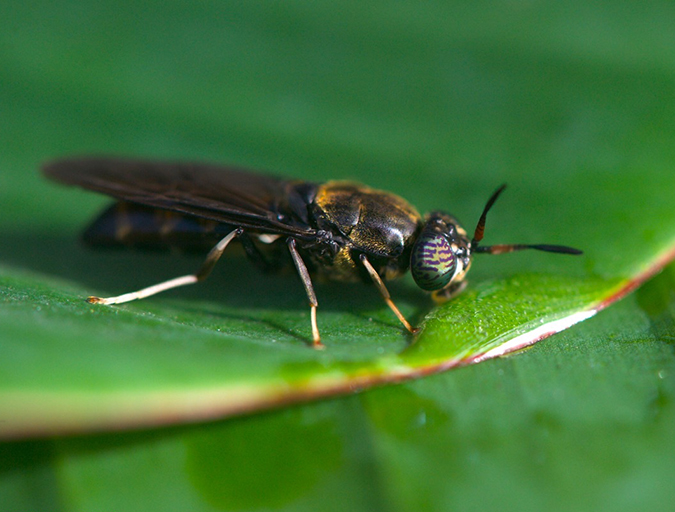
Aquafeeds
Buggin’ out: Tapping the potential of insect meal in aquaculture
Black soldier flies are gaining interest as a leading alternative ingredient in aquafeeds. But will the “ick” factor be a turn-off? Advocate contributor Clare Leschin-Hoar investigates.
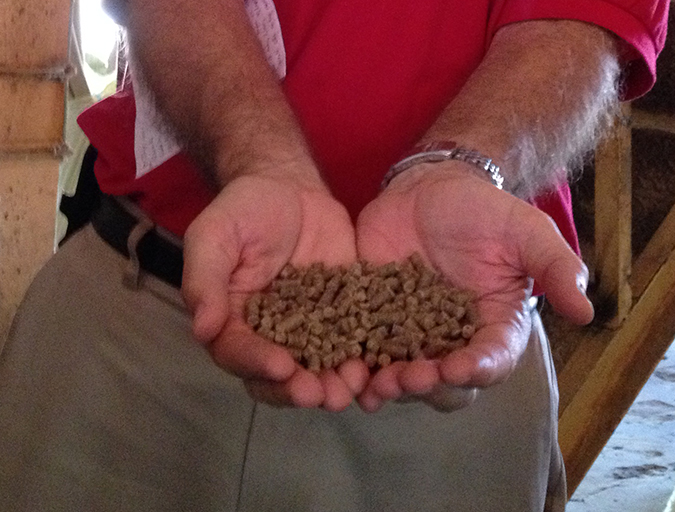
Aquafeeds
F3 blows past funding goals as fishmeal alternatives proliferate
A competition designed to drive innovation in aquafeeds has doubled its original funding goal and has attracted some of the biggest names in fish feed. F3 has also served as a catalyst for collaboration among feed manufacturers and ingredient suppliers.
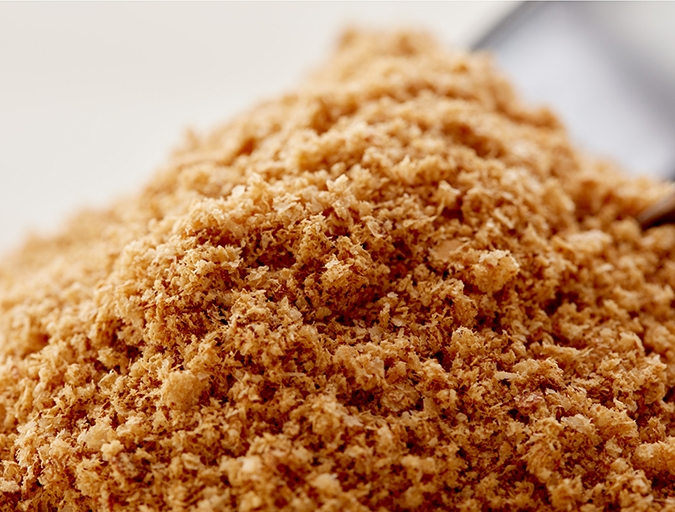
Aquafeeds
Bridging the omega-3 gap with methane, microalgae
Innovation is leading to new ingredient options for renewable sources of omega-3 fatty acids. But Replicating long chain fatty acids is a tall order, Advocate contributor Lisa Duchene discovered.

